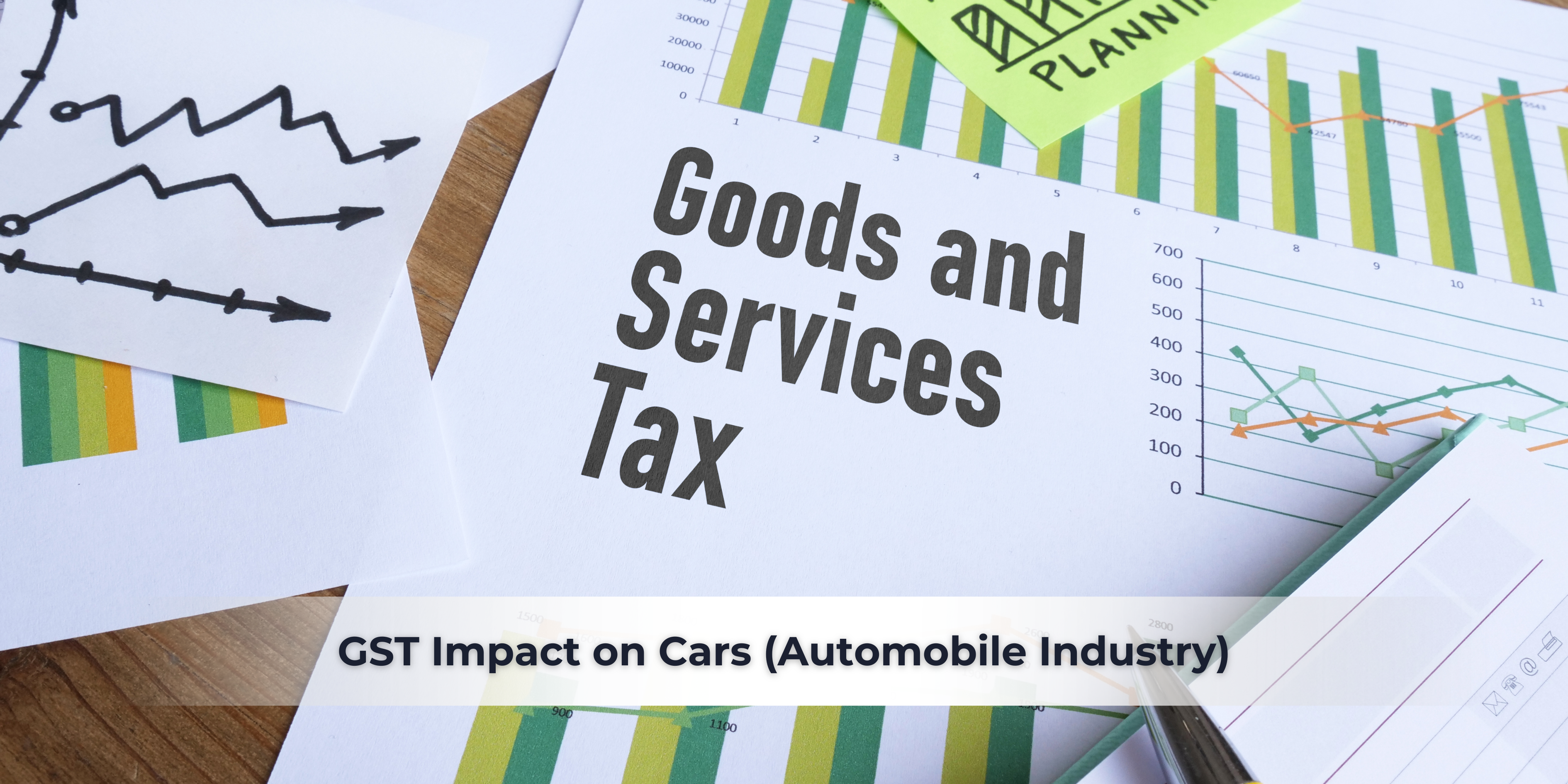The GST impact on cars in India directly shapes vehicle affordability, with current taxes reaching up to 50% on luxury cars and SUVs. While small cars face a lower burden, the government’s proposed GST reduction on cars could simplify rates to 18% for most vehicles and 5% for EVs, offering relief to mass-market buyers. However, luxury vehicles may still attract a steep 40% slab, keeping prices high.
This article analyzes the current GST on cars, proposed reforms, and their implications for consumers and the automobile industry in India.
What is GST on Cars?

Introduced in July 2017, GST absorbed multiple indirect taxes like excise duty, VAT, and octroi, streamlining India’s tax system. Instead of layered taxation, cars are now taxed under a single GST regime, which combines a base GST rate (28%) plus a compensation cess for most vehicles.
The exception: Electric Vehicles (EVs), which enjoy just 5% GST with no additional cess a clear move to promote green mobility.
GST Rates on Cars in India (Current)
The GST on cars is determined by engine size, car length, and ground clearance. Luxury cars and SUVs attract a higher cess, while small cars are taxed less.
Current GST Slabs on Cars
| Vehicle Type | Engine Size & Length | Base GST Rate | Compensation Cess | Total Effective Tax |
| Small Petrol Cars | < 1200cc, < 4m | 28% | 1% | 29% |
| Small Diesel Cars | < 1500cc, < 4m | 28% | 3% | 31% |
| Mid-size Sedans | > 1200cc, > 4m | 28% | 15% | 43% |
| Luxury Cars | > 1500cc | 28% | 20% | 48% |
| SUVs | > 1500cc, > 4m, > 170mm ground clearance | 28% | 22% | 50% |
| Electric Vehicles | All sizes | 5% | None | 5% |
Proposed GST Rate Overhaul (2025)

The government is considering a two-tier GST structure with reduced slabs for simplification.
| Vehicle Type | Proposed New GST Slab | Potential Impact |
| Small Cars (petrol/diesel) | 18% | Major price reduction (11-13% cheaper). |
| Luxury Cars & SUVs | 40% (special slab) | Minimal relief, tax burden remains high. |
| Electric Vehicles (EVs) | 5% (unchanged) | Tax advantage narrows as ICE cars become cheaper. |
GST’s Impact on the Automobile Industry

For Consumers
- Affordable small cars: Post-GST, compact and mid-size cars became cheaper. The proposed 2025 reforms could reduce small car prices even further.
- Luxury cars remain expensive: Despite GST simplification, luxury cars and SUVs still face nearly 40% tax.
For Manufacturers
- Simplified tax compliance: GST allows input tax credit (ITC) on raw materials and components, reducing costs.
- Encouragement for EV production: With only 5% GST, automakers are investing more in electric mobility.
For Dealers
- GST standardization has simplified billing and compliance.
- Used car sales are taxed only on the profit margin, reducing dealer liability.
GST on Luxury Cars – A Separate Case
Luxury vehicles in India are among the most heavily taxed segments, with total levies touching 48–50% of the ex-showroom price. For instance, a luxury SUV priced at ₹1 crore ex-showroom may attract nearly ₹50 lakh in GST and cess, effectively doubling the final price for consumers.
While these high levies ensure significant government revenue, they also limit India’s luxury car penetration compared to global benchmarks, where luxury vehicles are relatively more accessible.
If the proposed 40% GST slab is implemented, luxury car buyers may still see only modest relief. Much will depend on how much of the tax benefit OEMs choose to pass on to customers, as manufacturers often balance price positioning, brand perception, and market dynamics when deciding final sticker prices.
Conclusion
The impact of GST on cars in India, particularly GST on luxury cars and SUVs, continues to be a subject of debate. The numbers vary widely depending on whether you consider the pre-tax assessable value, ex-showroom price, or the extent to which OEMs pass on tax benefits to customers. While proposals such as reducing the base GST slab to 18% and creating a 40% special slab for luxury cars have generated buzz, the real effect on car prices remains uncertain.
For buyers of luxury cars like the Mercedes-Benz S-Class, BMW 7 Series, or Audi Q7, the effective tax burden today can reach nearly 50% of the ex-showroom price. Even if new slabs are introduced, the final benefit will depend on how much manufacturers actually pass to the end consumers.
At this stage, something concrete can only be expected after the GST Council meeting, where official decisions will be finalized and notified.
With so much speculation and confusion, it’s best to rely on trusted updates. Follow Motozite to stay informed with clear, verified insights on GST changes, car prices, and the latest developments in the automobile industry.
References
- Press Information Bureau – Government of India – Major Announcements Point 3
- Ministry of Finance – GST Council Updates – GST Council Meeting
- Analysis of GST’s broader effect on India’s automobile industry: ClearTax – GST Impact on Automobile Industry
- Groww – GST on Car: GST rate structure and vehicle taxation breakdown

